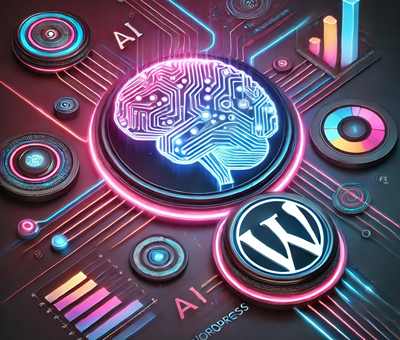If you’re stepping into the world of WordPress in 2025, you’re in for an exciting journey. WordPress remains the most popular content management system in the world — powering over 40% of all websites globally. Whether you’re starting a blog, launching an online store, or building a portfolio, knowing a few key tips can make your experience smoother and more rewarding.
Here are 10 essential WordPress tips for beginners in 2025:
1. Choose the Right Hosting Provider
Your hosting provider affects your site’s speed, security, and reliability. In 2025, popular beginner-friendly hosting options include Bluehost, SiteGround, and Hostinger. Look for one-click WordPress installations, automated backups, and solid customer support.
2. Start with a Lightweight Theme
Avoid heavy themes with bloated code. Lightweight themes like Astra, GeneratePress, or the native Twenty Twenty-Five theme offer fast performance and high customizability. They also work well with page builders like Elementor or the block editor (Gutenberg).
3. Use the Block Editor (Gutenberg)
Gutenberg has evolved dramatically and is now powerful enough to replace many traditional page builders. Take time to learn how to use blocks effectively for layout and design — it’s faster and cleaner than installing multiple plugins.
4. Install Only Essential Plugins
Too many plugins can slow down your site or create conflicts. Start with these essentials:
-
SEO: Rank Math or Yoast
-
Caching: WP Rocket or W3 Total Cache
-
Security: Wordfence or Sucuri
-
Backups: UpdraftPlus
-
Analytics: Site Kit by Google
Only add more plugins when absolutely necessary.
5. Keep Everything Updated
WordPress, themes, and plugins receive frequent updates for performance, compatibility, and security. Enable automatic updates for minor changes and review major ones carefully before applying.
6. Prioritize Mobile Optimization
In 2025, mobile-first design is non-negotiable. Choose responsive themes, test pages on multiple screen sizes, and use tools like Google’s Mobile-Friendly Test to ensure a smooth mobile experience.
7. Focus on Website Speed
Visitors expect fast-loading websites. Here’s how to boost performance:
-
Compress images using plugins like ShortPixel or Smush
-
Use a CDN (Content Delivery Network) like Cloudflare
-
Optimize caching and minify CSS/JS
Fast sites improve SEO and user satisfaction.
8. Learn the Basics of SEO
Search Engine Optimization (SEO) helps your content get discovered. Start with the basics:
-
Use descriptive titles and meta descriptions
-
Create readable URLs (permalinks)
-
Add internal and external links
-
Use headings (H1, H2, H3) properly
-
Submit your sitemap to Google Search Console
9. Customize Your Permalinks
Go to Settings > Permalinks and switch from the default structure (?p=123) to a clean format like /post-name/. This improves SEO and looks more professional.
10. Take Regular Backups
Things can go wrong — from plugin conflicts to hacking. Regular backups ensure you can restore your site quickly. Use tools like UpdraftPlus or Jetpack Backup, and store copies off-site (e.g., Google Drive or Dropbox).
Final Thoughts
Starting with WordPress can feel overwhelming, but with the right approach, you can build a secure, fast, and beautiful site even as a complete beginner. In 2025, WordPress continues to grow with better tools, themes, and automation — making it easier than ever to create your dream website.
Stick to these 10 essential tips, and you’ll set yourself up for long-term success. Happy building!









